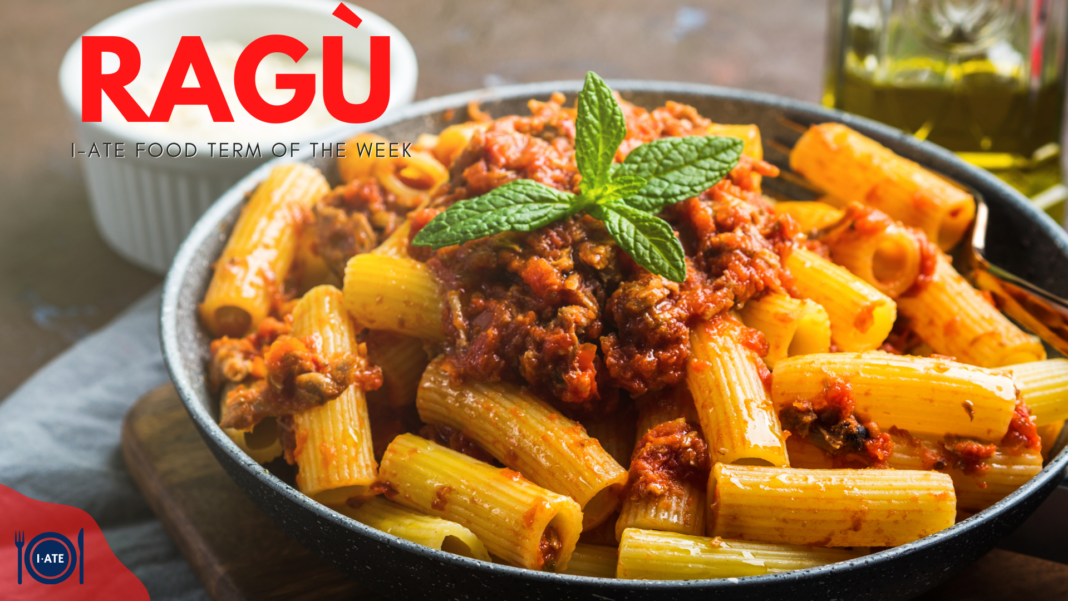Ragù: the King of Neapolitan Sundays
Among the many recipes that make the Neapolitan culinary tradition unique, there is one that the Neapolitans particularly care about. It’s the recipe that one associates with Sunday and family, the recipe in which all the Neapolitan pride is condensed. We’re talking about ragù.

In cookbooks and food websites you will find it indexed among the “main courses”, but it’s much more than that.
Ragù is a very versatile dish: in Naples, not only pasta, but also the second course (especially meat) can be seasoned with the ragù sauce, and, in the end, even bread is dipped into it through a ritual called scarpetta (literally, “little shoe”).
If you are curious and want to have a try at preparing Neapolitan ragù – perhaps to surprise your friends – we have bad news: it’s not that easy!
Every family in Naples has its own traditions, from the choice of meat cuts to the cooking times, including the order in which to use the ingredients and the many additions. Each family recipe is often kept secret and handed down from generation to generation.
The difficulty of the recipe is also relative. There are those who use only fresh cuts of meat and those who, on the other hand, cook them in various ways before starting to prepare ragù. Don’t be surprised if you find meatballs in one ragù, braciole seasoned with raisins and pine nuts in another one, and, in yet another, cotiche imbottite prepared with pork skin.
According to a Neapolitan legend, ragù was invented to sweeten the heart of the ruthless king Philip I of Anjou. The king, surprised by the quality of the dish, decided to be reconciled with his subjects, who were given the recipe for ragù.

Historical sources, on the other hand, claim that ragù was first introduced in noble houses, thanks to the virtuous Monsieurs, chefs who arrived in Naples at the behest of Queen Mary Caroline of Austria.
Over time, the recipe passed from noble to popular kitchens, and the original name was mangled: the French ragoût, which derived from the verb ragoûter (literally “revive the taste”), became ragù. Even the poor Monsieurs were referred to simply as Monsù!
Here follows the ragù recipe of the multi-starred Neapolitan chef Antonino Cannavacciuolo:
[serves 4]
1 pound of pork ribs
1 white onion, very thinly sliced
2 pounds of peeled San Marzano tomatoes
1 chili pepper
1 bay leaf
1 glass of red wine
extra virgin olive oil, salt and pepper
Clean the pork ribs and cut them in the direction of the bone. Sprinkle with salt and pepper, and let marinate for around 10 minutes. Fry the ribs in a large saucepan with a drizzle of oil until a golden crust is formed, then add the sliced onion and the chili pepper (if you don’t like chili pepper you don’t have to add it). Let it sweat, then simmer with red wine. As soon as the alcohol evaporates, cover all the ingredients with peeled tomatoes. Cook over low heat for at least 5 hours. Halfway through cooking, add the bay leaf and, when cooked, remove the meat from the bone.
One way or another, the origins of this typical Neapolitan dish seem to be firmly linked to nobility. One thing is certain: Neapolitan ragù, along with its inseparable friend “scarpetta”, is definitively the king of Neapolitan Sundays.
If you liked this article, you should read also the one of Manala.
References
La Cucina Italiana. 2021. A Neapolitan Ragù Primer – La Cucina Italiana. [ONLINE] Available at: https://www.lacucinaitaliana.com/trends/restaurants-and-chefs/secret-recipe-for-neapolitan-ragu. [Accessed 26 November 2021].
Ragù in Vocabolario – Treccani. 2021. ragù in Vocabolario – Treccani. [ONLINE] Available at: https://www.treccani.it/vocabolario/ragu/. [Accessed 26 November 2021].
Carrie’s Experimental Kitchen. 2021. Italian Sunday Dinner: Neapolitan Ragù (Italian Sauce or Gravy). [ONLINE] Available at: https://www.carriesexperimentalkitchen.com/neapolitan-ragu/. [Accessed 26 November 2021].
Written by Antonio Leo, PhD student in “European Languages and Specialized Terminology” at the University of Naples “Parthenope”.

